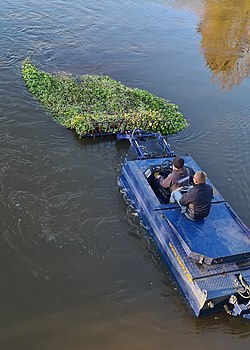Description
(
Inglês
)
fornecido por Flora of Zimbabwe
Perennial semi-aquatic herb.
- licença
- cc-by-nc
- direitos autorais
- Mark Hyde, Bart Wursten and Petra Ballings
- citação bibliográfica
- Hyde, M.A., Wursten, B.T. and Ballings, P. (2002-2014). Hydrocotyle ranunculoides L. f. Flora of Zimbabwe website. Accessed 28 August 2014 at http://www.zimbabweflora.co.zw/speciesdata/species.php?species_id=142950
- autor
- Mark Hyde
- autor
- Bart Wursten
- autor
- Petra Ballings
Frequency
(
Inglês
)
fornecido por Flora of Zimbabwe
Rare
- licença
- cc-by-nc
- direitos autorais
- Mark Hyde, Bart Wursten and Petra Ballings
- citação bibliográfica
- Hyde, M.A., Wursten, B.T. and Ballings, P. (2002-2014). Hydrocotyle ranunculoides L. f. Flora of Zimbabwe website. Accessed 28 August 2014 at http://www.zimbabweflora.co.zw/speciesdata/species.php?species_id=142950
- autor
- Mark Hyde
- autor
- Bart Wursten
- autor
- Petra Ballings
Worldwide distribution
(
Inglês
)
fornecido por Flora of Zimbabwe
America
- licença
- cc-by-nc
- direitos autorais
- Mark Hyde, Bart Wursten and Petra Ballings
- citação bibliográfica
- Hyde, M.A., Wursten, B.T. and Ballings, P. (2002-2014). Hydrocotyle ranunculoides L. f. Flora of Zimbabwe website. Accessed 28 August 2014 at http://www.zimbabweflora.co.zw/speciesdata/species.php?species_id=142950
- autor
- Mark Hyde
- autor
- Bart Wursten
- autor
- Petra Ballings
Comprehensive Description
(
Inglês
)
fornecido por North American Flora
Hydrocotyle ranunculoides L. f. Suppl. 177. 1781
Hydrocotyle americana Walt. Fl. Car. 113. 1788. Not H. americana L. 1753. Hydrocotyle nutans Cirillo, PI. Rar. Neap. 1: 20. 1788. Hydrocotyle cvmbalarifolia Muhl. Cat. 30. 1813. Hydrocotyle b'atrachioides DC. Prodr. 4: 667. 1830.
Hydrocotyle adoensis Hochst.; Hoppe & Fiirnrohr. Flora 24': Intell. 28. 1841. Hydrocotyle ranunculoides a genuina Urban in Mart. Fl. Bras. II 1 : 284. 1879. Hydrocotyle ranunculoides i natans Urban in Mart. Fl. Bras. II 1 : 284. 1879. Hydrocotyle ranunculoides var. lobata Urban in Mart. Fl. Bras. II 1 : 283. 1879. Hydrocotyle ranunculoides var. inciso-crenata Urban in Mart. Fl. Bras. II 1 : 284. 1879. Hydrocotyle ranunculoides /3 adoensis Urban in Mart. Fl. Bras. II 1 : 284. 1879. Hydrocotyle ranunculoides y brasiliensis Urban in Mart. Fl. Bras. II 1 : 284. 1879. Hydrocotyle ranunculodes [sic] f. minima Ktintze, Rev. Gen. 3 3 : 114. 1898.
Stems slender to somewhat fleshy, floating or creeping; leaves not peltate, roundishreniform with a sinus at the base, excluding the petioles 5-80 mm. long, 5-80 mm. broad, 5-6-lobed about to the middle, the lobes crenate or lobulate, glabrous; petioles mostly slender, 1-34.5 cm. long, glabrous; peduncles shorter than the leaves, axillary, 4-60 mm. long, glabrous; umbels simple, 5-10-flowered; pedicels 1-3 mm. long, spreading and ascending; stylopodium depressed; fruit suborbicular, 1-3 mm. long, 2-3 mm. broad, the dorsal surface rounded, the ribs obsolete; strengthening cells absent.
Type locality: Mexico, Mutis.
Distribution: Pennsylvania and Delaware to Florida, west to Arkansas, Texas, and Arizona; Washington, south along the coast to Panama; Cuba; also in South America. (Curtiss 5888, Elmer 4657.)
- citação bibliográfica
- Albert Charles Smith, Mildred Esther Mathias, Lincoln Constance, Harold William Rickett. 1944-1945. UMBELLALES and CORNALES. North American flora. vol 28B. New York Botanical Garden, New York, NY
Hydrocotyle ranunculoides
(
Inglês
)
fornecido por wikipedia EN

Collecting the floating pennywort with a
mowing boat in Germany
Hydrocotyle ranunculoides, known commonly as floating pennywort, or floating marshpennywort, is an aquatic plant in the family Apiaceae. It is native to North and South America.
Origin and invasiveness
Water pennywort is an aquatic plant, native to the Americas. Due to its popularity as a pond plant, and subsequent escape into rivers, it has established as an invasive alien species in parts of Europe, Australia, Africa and Japan.[1][2][3] It was one of five aquatic plants which were banned from sale in the UK from April 2014, and was the first prohibition of its kind there.[4] On the other hand, it is in decline in parts of its range in the United States.[5]
In Europe, floating pennywort is included since 2016 in the list of Invasive Alien Species of Union concern (the Union list).[6] This implies that this species cannot be imported, cultivated, transported, commercialized, planted, or intentionally released into the environment in the whole of the European Union.[7]
Description
Water pennywort has stems that spread horizontally and can float on water.[8] Leaves grow on petioles up to 35 cm long, and are round to kidney-shaped, with 3–7 lobes and crenate to entire margins.[9] Flowers are small, pale greenish white to pale yellow, and come in umbels of 5–13.[8] Fruits are small achenes that can float, helping the seeds to disperse.[8]
The South American weevil Listronotus elongatus lays eggs on and eats the floating pennywort, and larvae also eat into the stems, reducing the pennywort's ability to grow. The weevil has been introduced for biocontrol of the floating pennywort into waterways in Britain, following extensive research to establish that the weevil is not a threat in itself.[10]
References

- licença
- cc-by-sa-3.0
- direitos autorais
- Wikipedia authors and editors
Hydrocotyle ranunculoides: Brief Summary
(
Inglês
)
fornecido por wikipedia EN

Floating pennywort infestation in the
River Soar,
Leicester 
Collecting the floating pennywort with a
mowing boat in Germany
Hydrocotyle ranunculoides, known commonly as floating pennywort, or floating marshpennywort, is an aquatic plant in the family Apiaceae. It is native to North and South America.
- licença
- cc-by-sa-3.0
- direitos autorais
- Wikipedia authors and editors



 Floating pennywort infestation in the River Soar, Leicester
Floating pennywort infestation in the River Soar, Leicester  Collecting the floating pennywort with a mowing boat in Germany
Collecting the floating pennywort with a mowing boat in Germany